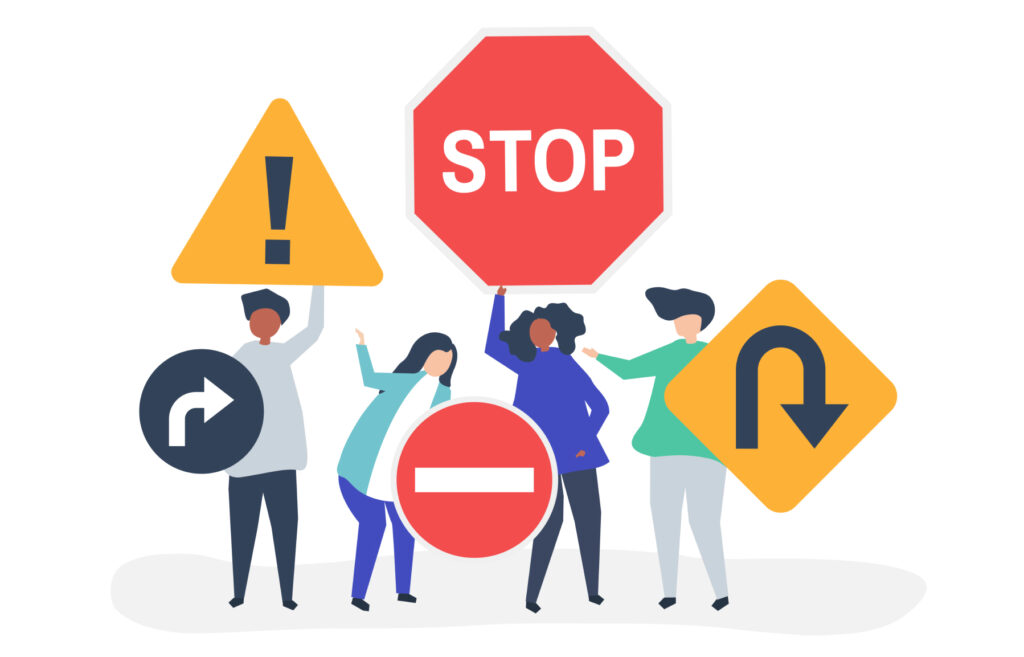H1 tags hold a lot of weight and have a big influence on search engine ranking. They direct search engines to your content – telling them if your content is relevant to a specific topic and, consequently, determining your content ranking. However, the importance of H1 tags and search engine optimization (SEO) is just one aspect.
We’ll explore how missing or multiple instances of H1 tags can bring more website traffic or completely tank your growth and reputation.
What is an H1 Tag?
H1 tags, commonly called header tags, are HTML elements that define the main heading of a webpage. Essentially, they serve as the page’s primary title, the most important heading, and explain the main topic. Search engines use these tags to get the context and relevance of the content and more.
Why are H1 Tags Necessary?
SEO Signals
H1 tags help search engines understand what you are trying to convey on your page. By specifying the main topic or theme, they explain the focus of the content, and the more descriptive, the better! When you land on a webpage, you and search engines shouldn’t take long after reading the headline to know what the page is all about.
Added bonus: H1 tags in your code may make it easier for Google to understand what’s on your page, which is a win for SEO rank.
User Experience
In the past, search engines ranked mainly based on keyword usage to assess web pages. Instead, for a website to achieve high organic search engine results, it has to deliver on user experience (UX).
H1 tags enhance UX by helping readers quickly understand the main topic of your page. Most websites place the H1 tag as the biggest text on the page. If you quickly look at smaller titles (like H2s and H3s), you’ll notice it’s similar to reading a book with a table of contents. If the H1 tag is done well, it helps organize the information and makes it easy to follow.
Accessibility
H1 tags also play a big role in website accessibility – they are especially important in supporting individuals with disabilities. Screen readers rely on header tags to navigate through content, and a clear H1 tag contributes to an organized and understandable experience for all users. Accessibility is not necessarily a factor in how search engines rank websites, it does, however, impact how users engage with your site. It also supports UX, credibility, and traffic.
What’s the Issue with Missing or Multiple Tags?
While we should understand the “why” of H1 tags, knowing the effects of missing or multiple tags is just as important. For instance, what happens if you decide to keep your pages as is and don’t fix this issue? We hope that isn’t the case, but if it is, here’s what could happen:
- Loss of Clarity – A webpage without an H1 tag or multiple tags can lose clarity. Search engines may have a hard time understanding the primary topic, and this affects the page’s overall ranking for relevant keywords.
- Keyword Dilution – The presence of multiple H1 tags can dilute the SEO value of each individual tag. Instead of emphasizing a single main heading, the existence of multiple tags may confuse search engines, impacting the accuracy of keyword optimization and potentially decreasing the page’s visibility.
- UX Challenges – Missing or multiple H1 tags can drive users away. Visitors need clear headings to understand content structure. Without a distinct main heading, users may also find it challenging to navigate and understand the information presented on the webpage.
What’s the Solution?
The solution is actually easier than you would think. There are also several best practices to use when adding tags. You can choose from tools provided by Clariti or other sites. You can also conduct your own site audit. Check out our list, and consider trying one tip or a mix of them all.
Clariti Filters
Filters are your friends. With Clariti, you can use a range of filters to identify quick fixes and more. Use the filter for H1 count to see which blogs have missing or multiple tags.
Single H1 Tag
Every page on your website should have a single H1 tag offering a main heading that clearly summarizes the page’s content. We recommend manually inspecting the HTML code on your site by searching for “<h1>”.
Tags for Subsections
Use H2, H3, and other header tags for subheadings if your content has subsections. This hierarchical structure helps search engines understand what the page/site is about and makes it easier for users to navigate what they’re reading.
Keyword-Rich H1 Tags
Craft H1 tags that describe the main topic and incorporate relevant keywords. Not only will you improve the page’s visibility for specific search queries, but it will also give search engines a clear understanding of your content. WordPress plugins like Yoast SEO can help you identify if your tags use relevant keywords.
Regularly Audit and Update
Conduct regular audits to identify any missing or misplaced H1 tags. Make sure that these tags remain relevant to the content and make updates as needed. SEO crawling tools like Screaming Frog or SEMrush can do a lot of this heavy lifting for you. Also, you can use browser extensions like SEOquake for Chrome.
Utilize HTML5
Embracing HTML5 structural elements, such as <header> and <article>, can further enhance the overall organization of your content. These elements also provide additional context to search engines. Use online HTML validators like the W3C Markup Validation Service to check and validate your code.
Featured Snippets
They’ve got questions, and you’ve got answers. Craft tags with the aim of securing a spot in featured snippets. This involves creating clear and informative headings that directly answer common user questions. Doing this can increase the likelihood of being featured at the top of search engine result pages.
Stay on Theme
Make sure that your H1 tags align with the overall theme and topic of the content. Clarity in your writing helps search engines understand the page better and makes it easier for people to know what’s on the website.
Keep It Under 60
Crafting clear and concise content is key, and this also applies to the length of H1 tags and headings. As a best practice, aim for a length between 50 and 60 characters, mirroring the approach for your meta title tags.
When it comes to SEO ranking, attention to detail is crucial, and H1 tags are no exception to the rule. Having too few or too many tags can have a damaging effect on your website’s search engine visibility and user experience.
By understanding the importance of H1 tags, quickly addressing issues, and implementing best practices, you can make sure that your website maintains a strong overall structure, which can ultimately improve SEO performance.
While regularly auditing and optimizing your H1 tags will keep your website in top shape and may help improve your SEO rank, it also keeps users coming back to your site for more.




